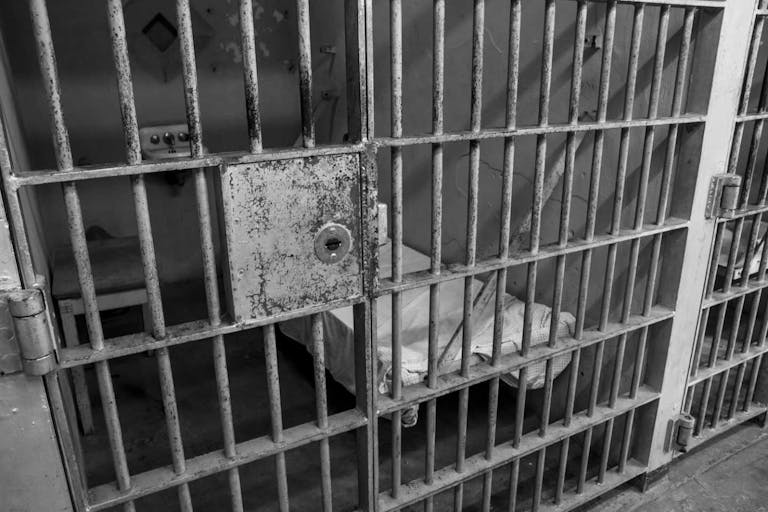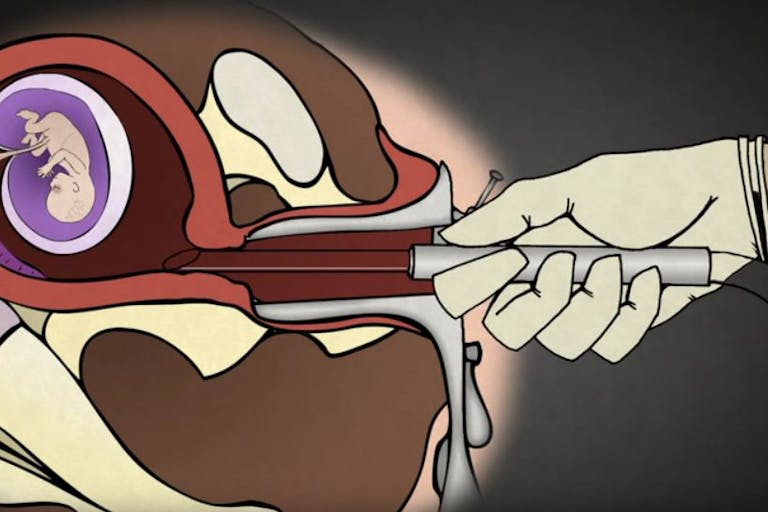
Decades after banning the death penalty, Canada kills inmates by 'assisted suicide'
Nancy Flanders
·
Abortion facility hides body parts from women in collection jar with ‘cute’ cover
An aspiration abortion, done in the first trimester, is committed by dilating the woman’s cervix, then inserting a surgical instrument called a cannula, which is attached to a tube. The tube is then attached to a machine which generates suction that violently pulls apart the developing baby. Former abortionist Dr. Anthony Levatino describes this type of abortion in the video below:

As early as 7 1/2 weeks after conception, a preborn baby has arms, legs, fingers and toes. The suction generated by the machine dismembers the child. (You can see what the baby’s body looks like after an aspiration abortion here — WARNING: GRAPHIC.)
If the abortionist and abortion workers are not careful, the mother may catch a glimpse of the dismembered parts of her baby in the collection jar.
In an article in The American Feminist, writer Ellen J Reich interviewed various abortion workers. Reich recounts what one worker, Julie, told her about how the abortion facility prevented women from seeing their aborted babies’ body parts:
In her private clinic, the products of conception were drawn into a bottle “covered with a cute calico cover” so the woman wouldn’t inadvertently catch a glimpse of a foot or an arm.
The “cute” cover prevented the woman from seeing the mutilated body of her baby. Abortion workers were thus able to keep women in the dark.
Many, many post-abortive women have said that abortion facilities kept them in the dark about fetal development. Sue Liljenberg, who was a teenager when she had her abortion, says:
When I walked into the clinic, I trusted the nurses and doctors, and thought they were concerned about my health enough to help me make a decision, not make my decision for me.
Only one solution was strongly recommended that day. When I questioned the development of my baby, I was told it wasn’t a baby yet, and that it looked like a tadpole. Since that day I have learned differently…. I was told that abortion was simple and safe and that I could go and live the rest of my life and have children when I was in a position to provide for them. I heard no scientific facts that day, only biased opinions.
Another post-abortive woman says:
I had an abortion a couple of years ago to [sic] twins. I didn’t know anything and they told me that it wasn’t a baby, there was no beating heart so there was no pain at all. They lied to me. I was 11 weeks to [sic] twins.
At 11 weeks, her babies had fully developed arms and legs and their hearts had been beating for almost two months. You can see what 11-week-old preborn babies look like in this video:

What eventually led Julie to leave the abortion industry? Reich writes:
Shortly before making the decision to leave, Julie experienced an internal jolt from a casual comment. The mother of a man she was dating, not knowing much about her job, once said, “It must be so neat to be around all those babies!”
This comment bothered Julie, and was one of the things that prompted her to leave the abortion industry. Reich says that Julie is now working with living babies, born prematurely, and is much happier.
An organization that helped her is And Then There Were None, which reaches out to abortion workers and encourages them to leave the industry. Its founder, Abby Johnson, is a former Planned Parenthood manager. The group provides financial and emotional support to former abortion workers and helps them find new jobs outside the abortion industry.
Source: Ellen Reich “An Insider’s Look into the Abortion Industry” The American Feminist Fall/Winter 2016
Live Action News is pro-life news and commentary from a pro-life perspective.
Contact editor@liveaction.org for questions, corrections, or if you are seeking permission to reprint any Live Action News content.
Guest Articles: To submit a guest article to Live Action News, email editor@liveaction.org with an attached Word document of 800-1000 words. Please also attach any photos relevant to your submission if applicable. If your submission is accepted for publication, you will be notified within three weeks. Guest articles are not compensated (see our Open License Agreement). Thank you for your interest in Live Action News!

Nancy Flanders
·
Investigative
Carole Novielli
·
Abortion Pill
Carole Novielli
·
Investigative
Carole Novielli
·
Investigative
Carole Novielli
·
Investigative
Nancy Flanders
·
Guest Column
Sarah Terzo
·
Abortion Pill
Sarah Terzo
·
Guest Column
Sarah Terzo
·
Guest Column
Sarah Terzo
·
Guest Column
Sarah Terzo
·